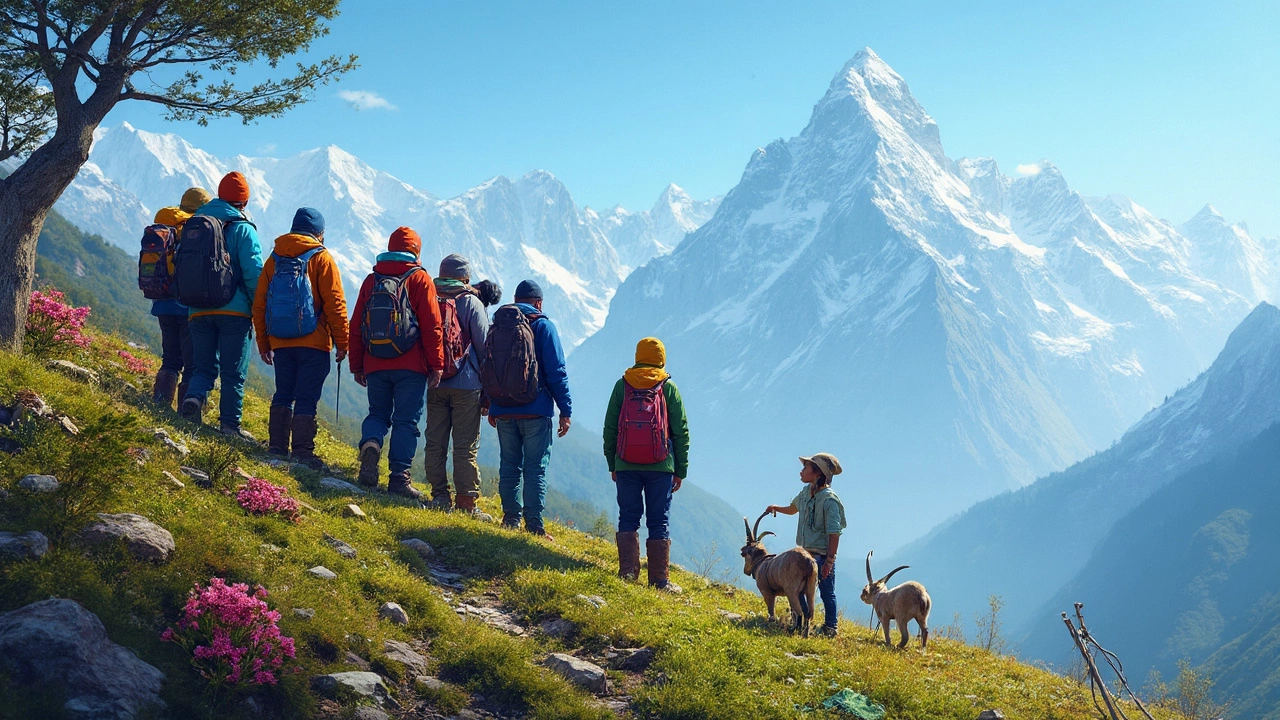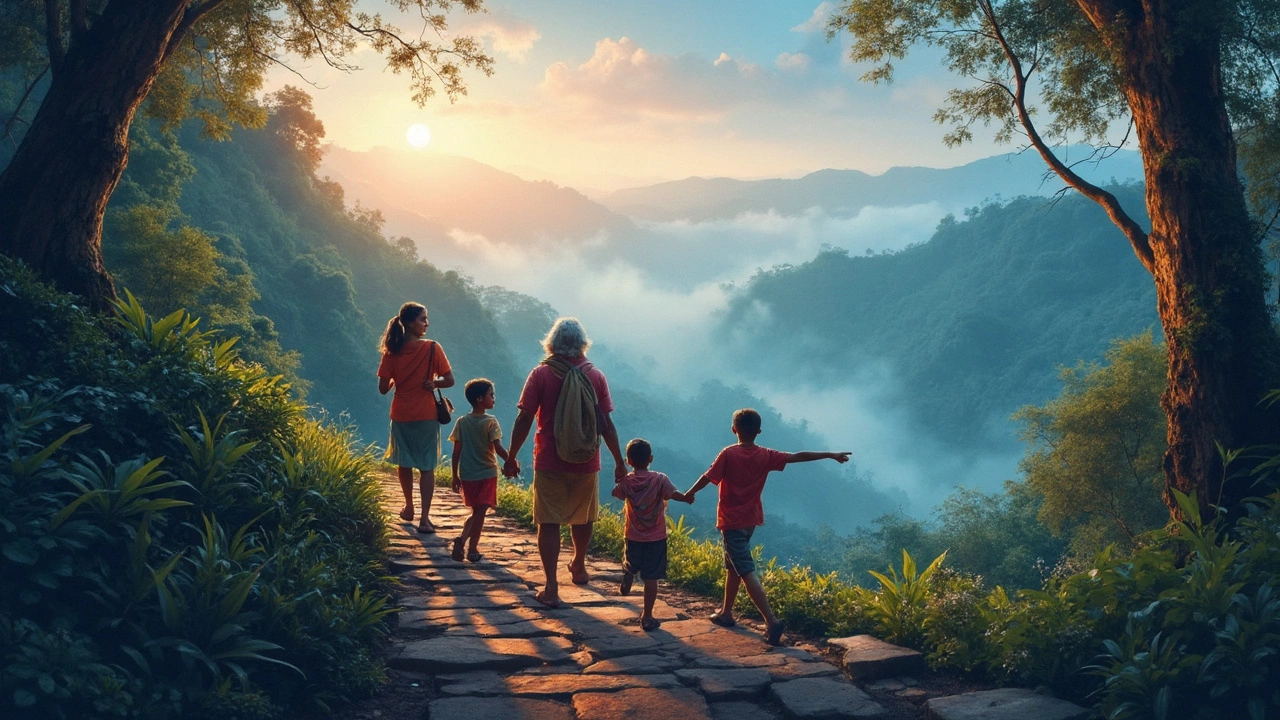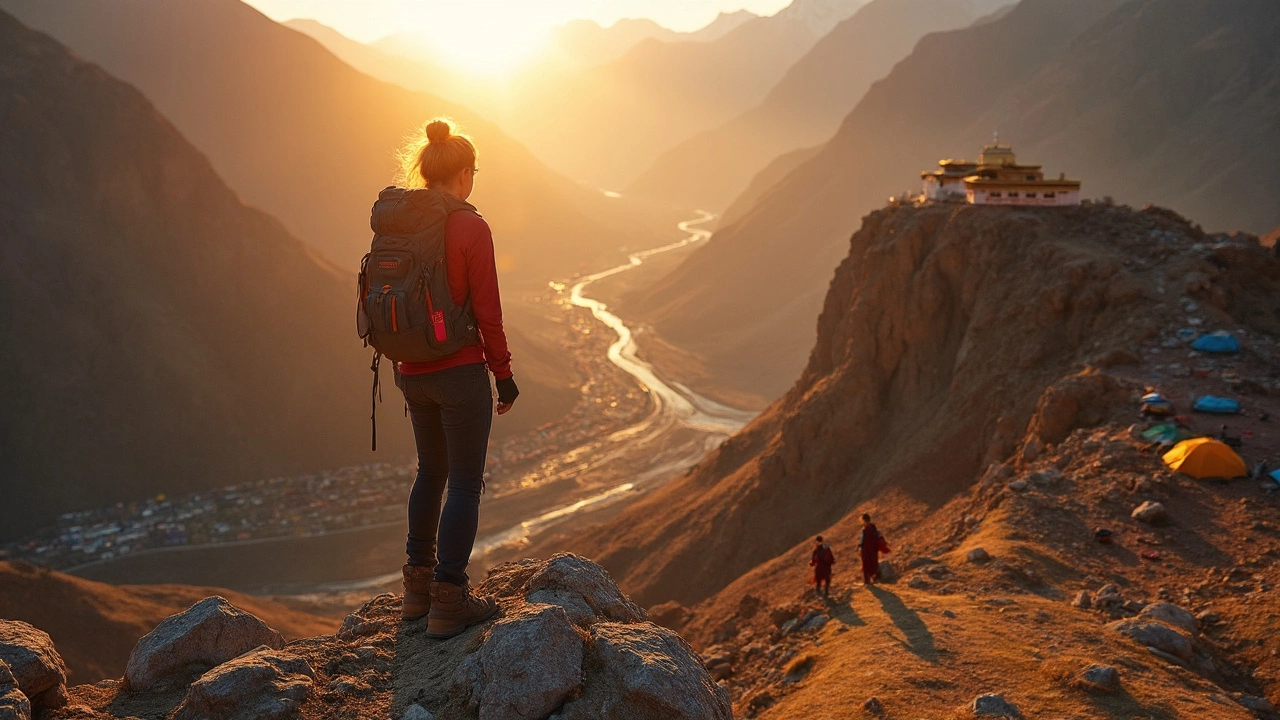Trekking Places in India: Where Is Trekking Most Popular?
 Apr, 26 2025
Apr, 26 2025
Thinking about lacing up your boots and heading out on a trek in India? You’re not alone. Trekking has gone from underrated to massive here, and it’s easy to see why. The country’s got everything—soaring Himalayan trails, lush forests in the south, gnarly plateaus out west, you name it. But not every spot gets the same attention. Some routes are packed year-round, while others are almost secret.
If you want the real scoop on where trekking’s hottest right now, it helps to know where crowds are heading and why. Most folks still dream about the Himalayas, but there’s way more happening than just the classic snowy stuff. New trails pop up every season, and some low-key locations are getting popular because they’re cleaner, quieter, and just as stunning. Picking the perfect trek isn’t one-size-fits-all, though. Families, solo adventurers, and hardcore climbers all zero in on different regions for their own reasons. So where’s everyone actually trekking in India—and what should you expect if you join them?
- Why India Is a Trekking Magnet
- The Himalayan Hype: Most Popular Trekking Zones
- Crowd Favorites vs. Hidden Gems
- Best Time to Hit the Most-Loved Trails
- Smart Tips for Picking Your Next Trek
Why India Is a Trekking Magnet
There’s no shortage of reasons why trekking India keeps topping bucket lists. First up, variety—India packs in a crazy mix of landscapes. You’ve got icy mountain passes, thick jungle, rolling deserts, and wide open meadows. This means there’s something for everyone, from beginners to those who want the high-altitude grind.
Let’s get specific. The Himalayan treks alone draw people from across the world. India isn’t just home to a slice of the Himalayas—it's got some of the most accessible and beautiful routes. Think about names like Roopkund, Valley of Flowers, Chadar, and Kedarkantha. Or consider the Western Ghats—lush, wild, and peppered with waterfalls. You can trek all year round if you pick the right region. When the north freezes over, the south stays open and green.
Here’s something a lot of first-timers forget: India’s villages and small towns play a huge part in the trekking scene. Many treks double as cultural deep-dives. You’ll get home-cooked food, ancient temples, and festivals you wander into by accident. Local guides often know shortcuts, hidden lakes, and viewpoints you won’t find in any app.
- Best trekking routes in India offer true bang for your buck—affordable, diverse, and safe when you stick to the popular paths.
- Trekking tourism is on the rise. A 2024 report showed Uttarakhand alone welcomed over 300,000 trekkers last season—up by nearly 20% from the year before.
- Permits and infrastructure are getting easier. You don’t have to be a hardcore backpacker; families and weekend warriors have endless short treks now.
In short, you get epic **trekking places**, all levels of challenge, affordable guides, and a chance to mix in some real adventure with incredible food and culture. That combo beats just walking up a hill anywhere else.
The Himalayan Hype: Most Popular Trekking Zones
Straight up, the Himalayas are the superstar of trekking India. If you say you’re going trekking here, most people picture snowy peaks—yeah, you know the photos. The draw? Massive mountains, wild weather, and bragging rights for finishing some of the world’s most epic trails. But it’s not just about altitude. Each region comes with its own style and crowd.
Let’s break it down. Himachal Pradesh is a favorite for all levels. Places like Triund, Kheerganga, and Hampta Pass see loaded campsites every season. If you’ve got time and stamina, Pin Parvati Pass and the Great Himalayan National Park area are worth every sore muscle.
Uttarakhand is next. Ever heard of the Valley of Flowers? It’s a real thing—full of bright wildflowers, streams, and mist. Kedarkantha is another legend, especially for first-timers and winter lovers. Crazy enough, almost 80,000 people did the Kedarkantha trek in the last year alone. Roopkund, despite its spooky skeleton stories, attracts loads every summer too.
Nepal often hogs the spotlight, but Sikkim is like the cool, under-rated cousin. Treks like Goechala put you face-to-face with awesome views of Kanchenjunga, India’s tallest peak. Less crowded, but still big on views.
Let's make it clear which Himalayan zones get the most action each year:
| Region | Top Treks | Annual Visitors (2024 Estimate) |
|---|---|---|
| Himachal Pradesh | Triund, Hampta Pass, Pin Parvati | 60,000+ |
| Uttarakhand | Kedarkantha, Valley of Flowers, Roopkund | 100,000+ |
| Sikkim | Goechala, Dzongri | 15,000+ |
| Ladakh | Chadar, Markha Valley | 12,000+ |
One thing to watch for—the trails are busy during school and festival holidays. If you’re chasing peace, try the shoulder seasons (April-May or late September) and skip long weekends. The Himalayan high is the real deal, but be ready for sudden weather changes and always book your permits in advance—especially for core trekking places.

Crowd Favorites vs. Hidden Gems
Let’s be real—when talking about trekking India, the first names that pop up are usually the Himalayas' big hits. Manali to Leh, Kedarkantha, and Triund see crowds year-round, thanks to all the stunning Instagram shots and easy accessibility. The Kedarkantha trek in Uttarakhand gets thousands lining up every winter, especially after Christmas and New Year. Even Hampta Pass, with its ridiculously scenic switch from pine forests to snow bridges, is almost never quiet in the summer.
But here’s something wild—stats from Himachal Pradesh Tourism show that in peak season, up to 2,000 trekkers a week sign up for Triund alone. If you love meeting folks on the trail, these places are perfect. With established routes, easy guides, and plenty of chai stops, it’s all pretty chill. You’re rarely alone, though, so if crowds get on your nerves, this can backfire fast.
Now, let’s talk about hidden gems. Regions like the Western Ghats and the Northeast are loaded with under-the-radar treks. For example, Kudremukh in Karnataka—often ignored for the Himalayas—gives those misty, green hill vibes with hardly any crowd. The Tarsar Marsar trek in Kashmir somehow stays low-key despite its jaw-dropping scenery. Even in Himachal, treks like Buran Ghati and Kareri Lake get skipped over by most, so you might have an entire campsite almost to yourself. No need to elbow past people for sunrise shots.
- If you’re in it for the views and lively trail banter, stick with classics like Sandakphu, Valley of Flowers, and Chadar.
- If you want actual solitude, trails in Arunachal Pradesh, such as the Bailey Trail, or escapes like Dzongri in Sikkim, are gold.
- Down south, check out Chembra Peak in Kerala or the forest routes near Coorg—monsoon treks here have a different energy altogether.
And here’s a tip: popularity isn’t always about the best experience. Sometimes, it’s just smarter marketing or better transport. Those hidden trails? They can be just as rewarding, without the mess and noise. You really can choose your own adventure when it comes to trekking places in India.
Best Time to Hit the Most-Loved Trails
Not all trekking places in India work the same way when it comes to timing. Pick the wrong month, and you’re either going to sweat buckets or get snowed in. Timing your trip right means you get clear views, safe trails, and less hassle with weather.
Let’s get specific. The classic Himalayan treks—like Kedarkantha, Roopkund, and Hampta Pass—are best from May to early June and again from September to mid-November. Winters up north? Ice-cold and made for serious snow junkies. If you’re aiming for spring flowers or crisp views, those May and September windows are gold.
If you’re looking at trekking India further south, like the Western Ghats in Kerala or Karnataka, shoot for November to February. The monsoon brings insane rain from June to September—trails get slippery, leeches can be a pain, and even experienced trekkers find it tough. In these regions, winter is your buddy. Forest trails are fresh, and the temperature won’t knock you down.
- March to April: Decent for lower-altitude routes, but the higher Himalayan passes are still mostly snowed in.
- July to September: Avoid north and west India (floods, landslides, closed trails) but consider Kashmir for wildflowers post-monsoon.
- October to November: This is prime time for most treks—weather’s pleasant, the post-monsoon air is clear, and things are less crowded than in summer.
Here’s a quick cheat sheet for the most-loved trekking routes:
| Region | Best Trekking Months |
|---|---|
| Himalayas (Uttarakhand/Himachal) | May-June, Sep-Nov |
| Kashmir | July-Sep |
| Western Ghats (South India) | Nov-Feb |
| Northeast India | Oct-Apr |
One last thing—festivals and long weekends mean crowded trails, especially on famous treks near big cities. If you want fewer tents and cheaper homestays, try going mid-week or right after the holiday rush. That way, you enjoy those epic views without someone else’s selfie stick in the frame.

Smart Tips for Picking Your Next Trek
Picking the right trek in India is almost as important as how you trek. With so many trekking places scattered across the country, it’s easy to get overwhelmed—or end up on a trail that’s way above your comfort zone. Here’s the stuff most brochures won’t tell you, but you’ll wish you knew before heading out.
- Match the trek to your experience. Don’t get suckered by photos alone. Places like Kedarkantha and Triund are perfect for beginners and families—think gentle climbs, plenty of campsites, and a crowd you can handle. On the flip side, Stok Kangri, Chadar, or Goechala are for the seasoned pros—icy rivers, thin air, and a reality check if you’re out of shape.
- Consider the season. Himalayan treks are huge in May-June and September-October. Some trails literally shut down after the first snow in November. Down south, the Western Ghats shine during monsoon, but that also means leeches and muddy shoes. Check the season guides before planning anything.
- Crowd levels change everything. If you want peace and quiet, skip weekends and public holidays. Also, trails like Hampta Pass or Valley of Flowers get packed during peak season. Early mornings or off-peak months** mean fewer people and better photos.
- Permits and paperwork matter. Some states like Sikkim or parts of Uttarakhand need permits for trekkers, especially near the borders. It’s not hard, but skipping these steps can ruin your plan. Get permits online or grab them at the trailhead, and never stash your ID deep in your backpack—you’ll show it more than once.
- Group or solo? Going with a group means safety nets, guides, and decent food options. If you’re solo, pick marked trails and stay in touch with local rangers. Apps like MapMyHike and AllTrails now have real-time trail data—even my kid Aria likes checking them before we go anywhere new.
| Trek Name | Region | Difficulty |
|---|---|---|
| Triund | Himachal Pradesh | Easy |
| Kedarkantha | Uttarakhand | Easy |
| Hampta Pass | Himachal Pradesh | Moderate |
| Chadar Trek | Ladakh | Challenging |
One extra tip: always check latest weather alerts, especially for Himalayan treks. Landslides, heavy snow, or even surprise rain can mess with time and safety, no matter how good you’ve planned. Pack smart, follow locals’ advice, and keep a backup plan. The perfect trek is about being prepared as much as the place itself.